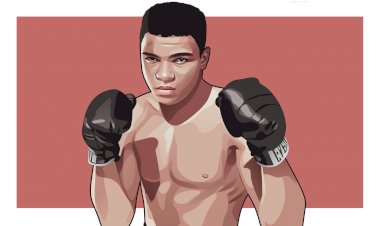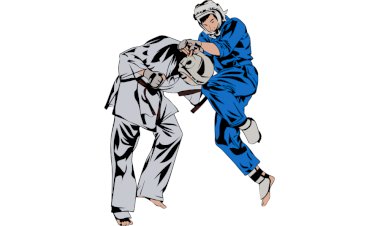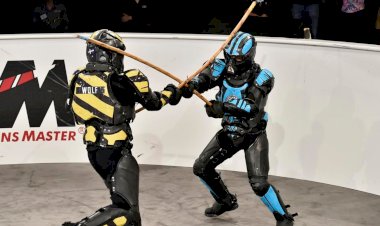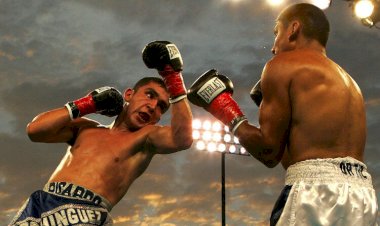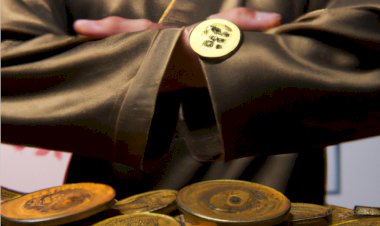The emergence of Mixed Martial Arts (MMA) in the 1990s
Mixed martial arts (MMA) is one of the youngest and most exciting combat sports in the world. Throughout its short history, MMA has gained an incredible popularity and today represents the fastest rising sport in the world. What is so interesting about it is that MMA welcomes fighters from any martial arts and gives them the chance to test themselves against the other fighting disciplines.
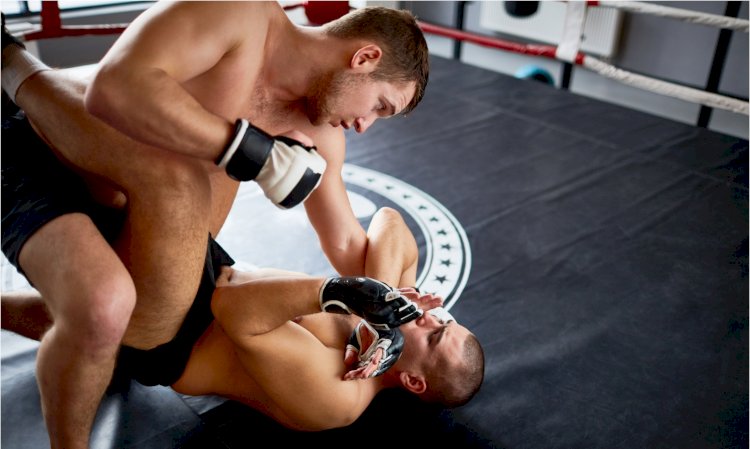
Ancient History
The origins of MMA are dating back to the 33rd Olympiad held in 648 B.C. This date is often used as the true origin of MMA. The memorable event introduced the hand-to-hand combat sport named “Pankration”, which translates to “all powers.” As its name suggests, the styles of ancient fighters incorporated the following “powers”: wrestling, striking and ground fighting that included joint locks and chokes. As we can see, Pankration was remarkably similar to the modern form of MMA. From Greece, the sport would get passed to Romans.
The events that shaped the modern-MMA
During the 19th century, French have developed a new sport named savate. The savate fighters would continuously test themselves against the different martial arts. Most famously against their fierce rival in English bare-knuckle boxers who happened to be the precursors of boxing. In that time, one of the very first mixed martial arts techniques named Bartitsu was founded in London (1899). Bartitsu combined European and Asian styles like catch wrestling, judo, boxing, and savate.
However, the MMA started shaping itself with the birth of different martial arts during the beginnings of the 1900s. In 1914, the famous Gracie family adopted the Judo (Kano Jiu-Jitsu) technique from the legendary Japanese judoka Mitsuyo Maeda. They've immediately changed its emphasis from grappling to ground fighting. By implementing various joint locks and chokes, they founded the Brazilian Jiu-Jitsu! At that time, other martial arts like Luta Livre followed and so was the legendary rivalry between the two sports! In order to prove the effectiveness and promote the BJJ, Gracie introduced the famous “Gracie Challenge”. As expected, most of the matches were between BJJ and Luta Livre. The majority of the bouts took place in arguably the first ever MMA organization, Vale Tudo. It’s fair to say that Vale Tudo tournaments have had a direct influence on the establishment of MMA as a sport on its own later in the future.
On the other side of the world, the Soviet Union developed the style most prominent to the modern MMA called Sambo. However, sambo would remain an unknown technique in the following decades.
During the mid-20th century, fights between different arts became incredibly popular. What’s more, combining multiple martial arts skyrocketed on the West with the arrival of martial arts movies and Bruce Lee as their leading star. Also known as the “father of MMA”, Lee believed that a true fighter is not a representation of one fighting discipline, but who can build and adapt his style around different arts. As a result of this trend, many famous athletes began challenging fighters from the opposite fighting styles. The famous early high-profile bouts which ultimately led to the foundation of the first MMA organization were:
- Masahiko Kimura (judo) vs. Helio Gracie (BJJ) – October 23, 1951; Rio de Janeiro Brazil
- Antonio Inoki (catch wrestling) vs. Muhammad Ali (boxing) – June 26, 1976; Tokyo, Japan
- Joe Hadley (boxing) vs. David Valovich (Karate) – June 22, 1976, Memphis Blues Baseball Park
Foundation of MMA and first organizations
With the fighters from different martial arts constantly challenging each other, CV Productions, inc decided to create the first ever mixed martial arts competition. Their first show “Tough Guy Contest” took place in 1980 in Pennsylvania. However, the sport didn’t last long as it was banned in 1993.
The Japanese introduced the Shooto promotion in 1985. For many, this was the first-ever founded MMA organization that incorporated the fighting techniques we’re witnessing today. In the beginning, it was composed of mostly wrestling competitions. However, the rules have evolved in the following years and adopt many other martial arts styles.
On the other side of the ocean, the Americans saw the huge potential of this new sport and they’ve established their own version called Ultimate Fighting Championship (UFC). The promotion had an immediate impact on the fighting game and their first event held on November 12, 1993, is often portrayed as the birth of modern-day MMA! Although the beginnings were pure freak shows, the sport quickly generated massive popularity.
Television critic Howard Rosenberg was the first one to use name “mixed martial arts” in a review of the UFC 1 event in 1993. Interestingly, UFC wasn’t the first promotion to use this term. It was the CEO of “Battlecade Extreme Fighting” Rick Blume in 1995.
Evolution of UFC rules and Fighting styles
Early dominance of Brazilian Jiu-jitsu
Since the early beginnings, one fighting style began to emerge as the most dominant one! The newly established sport represented the perfect opportunity for a previously mentioned Gracie family to come and introduce BJJ to the US audience! Royce Gracie completely dominated over the opposition from UFC 1 to UFC 5 by displaying incredible grappling techniques and submitting every single opponent inside the first round! Like a true martial artist, Gracie “came, saw and conquered” and has left the UFC in 1995.
Adaptation of new rules
In 1995, the general public began interrogating the legal issues of UFC and its shortage of rules and safety of the fighters. After ignoring the critics for a couple of years, things got critical and hit the breaking point when Sen. John McCain went on a campaign against the UFC and publicly advocating their ban. The UFC responded with the introduction of the first set of rules from 1996 to 2000 which included the following: the establishment of the eight weight divisions, adopting the boxing 10 point scoring system, instituting the official MMA referees and adding the necessary rounds and time limits.
In 2001, Dana White and his business associates Lorenzo and Frank Fertitta bought the UFC for $2 million dollars and founded the Zuffa as a parent company. With the days of head butting, hair pulling and groin strikes already gone, the new owners began working on a new set of rules which will change the face of the sport completely. Lorenzo Fertitta wisely used his previous connections with Nevada Athletic Commission to legalize the sport in many US states and force them to adopt the Unified Rules of Mixed Martial Arts.
Evolution of fighting styles
With the new rules rapidly improving the public image of the sport, many fighters from wrestling backgrounds started joining the promotion. The legends like Tito Ortiz and Chuck Liddell introduced the relentless mixture of wrestling and jiu-jitsu with the elements of ground punches known as “ground and pound.” Straight away, this style began taking over the sport and shaping the first forms of well-rounded styles that will follow in the future.
However, the evolution of MMA never stops, and a new generation of fighters literally exploded during the mid-2000s! The elite Muay Thai strikers that already had the grappling game added began overwhelming the old-school way of fighting! Anderson Silva and George St. Pierre are considered as the first well-rounded fighters and true game-changers in terms of technique! Everything they performed was many years ahead of what competition had to offer and it would take years for the others to adapt and learn how to deal with their game! This forced the MMA gyms all over the world to develop a new method of training which was built around four fundamental styles: Boxing, Muay Thay, BJJ and Wrestling
Mainstream rise of Mixed Martial Arts
It’s fair to say that UFC hit the mainstream rise from 2010 and there are three key reasons for it. The first one came in 2011 when Zuffa set a $700 million deal with the Fox television network! This helped the sport getting more recognized and for the first time, expands all over the world! However, the UFC needed a few more changes before finally becoming legalized in all US states. On July 3, 2015, the UFC began cooperating with the United States Anti-Doping Agency (USADA). This immediately helped the game becoming safer and competition more equal! Considering the massive changes, it's not a surprise that the birth of the first UFC superstars like Conor McGregor and Ronda Rousey began attracting fresh new audiences all around the globe!
With the pay-per-view numbers skyrocketing, UFC set a deal of the lifetime with the biggest sporting network ESPN earlier in 2019! The deal represents the greatest achievement of modern MMA, and we just can’t wait to see what the future will bring us!
Tomislav Zivanovic by Bushu

